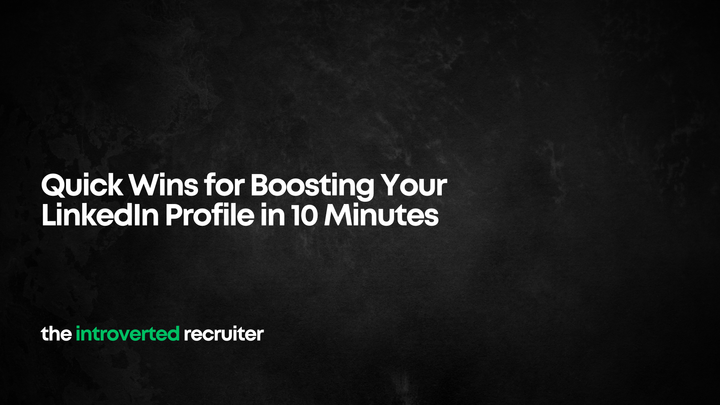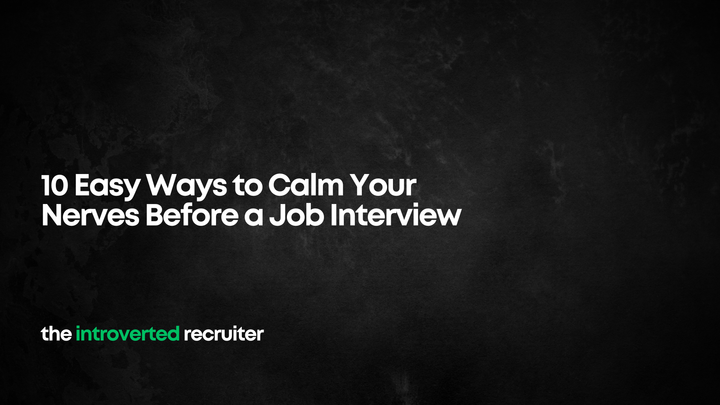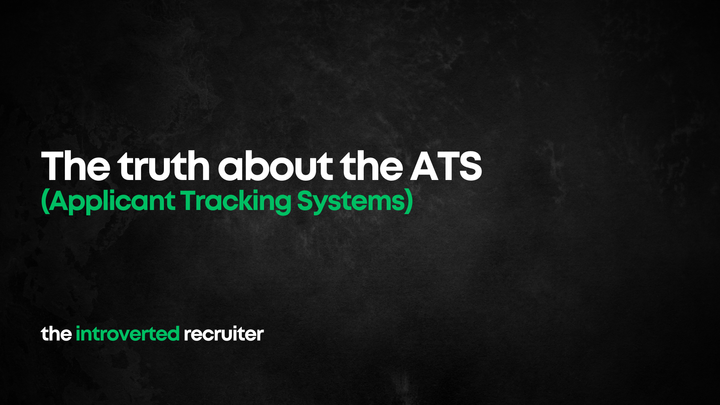The Hidden Job Market: How to Find Jobs That Aren’t Advertised

We all know the standard process: scroll through job boards, submit applications, rinse and repeat. But what if I told you that a huge portion of jobs out there aren’t even advertised? You’d be surprised by how many roles are filled without ever making it to a job board. This is what we call the hidden job market.
Now, before you roll your eyes, let me explain. I’ve spent over 20 years in recruitment, and trust me when I say that not all job openings are out in the open. Sometimes it's because the position is confidential, or maybe the hiring manager wants to avoid being bombarded with hundreds of irrelevant applications. Either way, you need to know how to tap into this hidden market if you want to up your job search game.
Let’s break down the steps you can take to find those unadvertised roles.
1. Networking: Your Ticket to the Hidden Job Market
If you're not a fan of networking, it's time to change your perspective. Networking isn't about schmoozing or handing out business cards like a robot—it’s about building genuine relationships that can lead to opportunities down the road.
A good chunk of unadvertised jobs get filled through referrals. Hiring managers trust recommendations from people within their network more than they trust an inbox full of random CVs. So, if you aren’t networking, you’re potentially missing out on 70% of available roles.
Here’s how to start:
- Reconnect with old contacts: Reach out to former colleagues, clients, or bosses. A simple “I’d love to catch up and hear what you’ve been up to” can reignite relationships.
- Attend industry events: Whether it's in-person conferences or virtual webinars, attending industry events can help you meet new people and get your name out there.
- Use LinkedIn groups: Get involved in LinkedIn groups related to your industry. Contributing to discussions and engaging with posts can put you in front of the right people without feeling like you're cold networking.
Action step: Make a list of 10 people in your industry (former colleagues, clients, etc.) and send them a quick message to reconnect. It doesn’t have to be awkward or forced, just show genuine interest in their work.
2. Direct Outreach to Hiring Managers
Here’s a little trick most job seekers don’t know: you can approach hiring managers before they even post a job. Yes, you read that right.
Companies sometimes haven’t gotten around to writing the job description or may be unsure about hiring until the right candidate pops up. By reaching out directly, you’re showing initiative, and it might just land you an interview before a role is even advertised.
Here’s how to do it:
- Identify target companies: Make a list of companies you’d love to work for. Maybe it's companies in your industry or ones you’ve heard good things about.
- Find the hiring manager: Use LinkedIn to track down the department head or the internal recruiter. If you’re a designer, find the head of design; if you're in marketing, find the VP of marketing.
- Send a personalized message: Reach out with a short message that includes a bit about who you are, why you’re interested in the company, and a link to your LinkedIn or portfolio. This isn’t the time to be pushy; it’s more of a “let’s keep in touch” kind of approach.
Example message:
Hi [Hiring Manager’s Name], I’ve been following [Company Name] for a while and really admire the work you’re doing in [specific area]. I’m a [your profession] with experience in [key skills or projects relevant to them]. If you’re ever looking for someone to join the team, I’d love to chat about how I could contribute. Feel free to check out my profile [insert LinkedIn or portfolio link].
Action step: Make a list of 5 companies you’d love to work for and send a personalized LinkedIn message to the relevant hiring manager.
3. Leverage LinkedIn to Your Advantage
LinkedIn is your secret weapon when it comes to finding unadvertised jobs. Recruiters live on this platform, and many of them rely solely on it to find candidates without ever posting a public job opening.
Optimizing your profile is key. Make sure your headline showcases exactly what you do, and your skills section is filled out with the keywords recruiters are searching for. If your profile is vague or incomplete, recruiters aren’t going to find you.
A few things to keep in mind:
- Use an engaging headline: Your job title is great, but you can take it further. Instead of “Marketing Manager,” try something like “Marketing Manager | Helping Brands Grow Through Data-Driven Campaigns.”
- Open to work: Turn on the “Open to Work” feature, but set it so only recruiters can see it. This way, they know you're available without blasting it to everyone.
- Engage with content: Regularly comment on or share posts related to your industry. The more active you are, the more visible you’ll be to potential employers.
Action step: Update your LinkedIn profile to include a strong, clear headline and turn on “Open to Work” for recruiters.
4. Tap into Industry-Specific Job Boards
While many mainstream job boards like Indeed or LinkedIn are great, industry-specific job boards can give you access to niche roles that often fly under the radar. These smaller, more targeted sites might not have the volume of a general job board, but they attract fewer irrelevant candidates, which means a better chance of your application standing out.
Do some research to find job boards that cater specifically to your field. For example:
- Tech roles? Check out Stack Overflow or AngelList.
- Marketing? Try GrowthHackers or Content Writing Jobs.
- Design? Dribbble and Behance are popular choices.
Not every role will be posted here, but some of the most exciting and lesser-known opportunities often are.
Action step: Find 2–3 niche job boards relevant to your industry and check them weekly for any new listings.
5. Build a Personal Brand That Attracts Opportunities
One of the best ways to tap into the hidden job market is to have opportunities come to you. And that’s where your personal brand comes in. When you're seen as an expert or thought leader in your field, companies take notice—and they’ll reach out to you.
You don’t need to be a social media star to build a solid personal brand. All it takes is a consistent online presence where you share insights, engage with your network, and showcase your expertise.
- Write articles: If you enjoy writing, consider starting a blog or publishing posts on LinkedIn. Sharing your thoughts on industry trends or lessons learned from your career builds credibility.
- Speak at events: Whether it’s a webinar or a local industry meetup, speaking in front of an audience positions you as an expert.
- Share case studies: If you’re a designer, marketer, or in any field where you create something, share detailed case studies of your work. Show the problem, your process, and the results you achieved.
Action step: Write a short LinkedIn article on a topic you’re passionate about in your industry. It doesn’t have to be long—just enough to share your insights and show you’re active and engaged.
Final Thoughts: Unlocking the Hidden Job Market Takes Effort
The hidden job market isn’t just for a lucky few—it’s available to anyone who knows where to look and how to network. By building relationships, being proactive, and positioning yourself as someone worth hiring, you’ll access a world of opportunities that never make it to a job board.
It takes time, yes. But with a consistent effort, you'll start seeing the results.
Sign Up For My Newsletter
Sign up for my free newsletter on SubStack for all the latest content straight into your inbox as well as a free Job Search Guide & CV Template.
Follow Me
Find me on LinkedIn , TikTok , YouTube or Instagram where I share lot’s of practical no nonsense advice.



